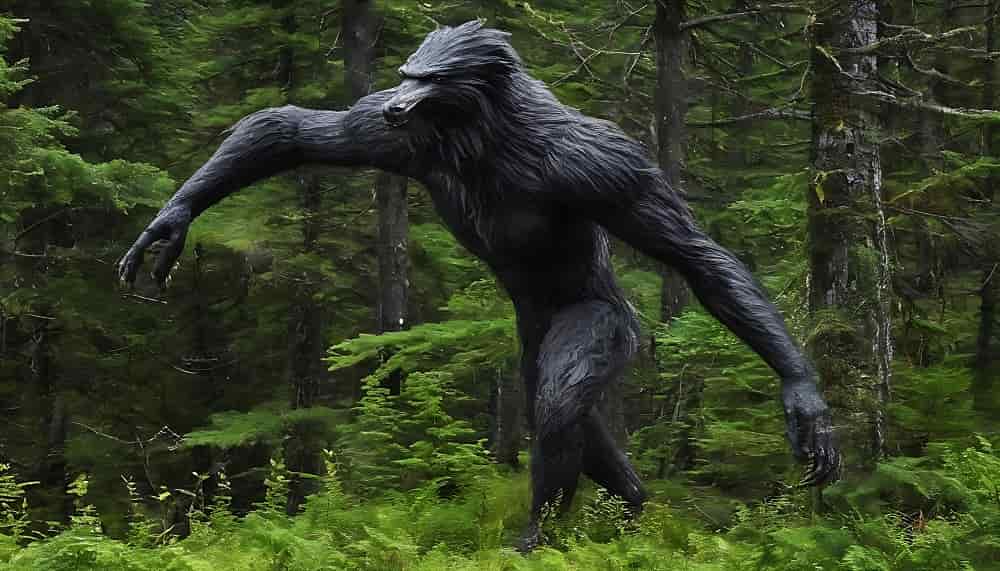Nestled amidst towering peaks, dense woodlands, and lofty glaciers, an enigmatic realm unveils itself, where approximately 20,000 individuals have vanished without a trace since the year 1988. This mysterious expanse is none other than the "Alaska Triangle." When the three key Alaskan locations, namely Juneau, Anchorage, and Utqiagvik (formerly Barrow), converge, they form a perplexing triangle that rivals the infamous Bermuda Triangle. What sets it apart is not only the alarming number of missing person reports but also the chilling narratives surrounding these disappearances. Acting as more than a mere gateway, the Alaska Triangle is shrouded in tales of various otherworldly entities. In today's discourse, we embark on an exploration into the enigma that is the Alaska Triangle.
The Mysterious Alaska Triangle is an enigmatic geographic area that has captivated the imagination of adventurers and conspiracy theorists alike. Similar to the infamous Bermuda Triangle, this region, located in the vast wilderness of Alaska, is shrouded in mystery due to a series of unexplained disappearances, strange phenomena, and eerie occurrences.
Spanning from Juneau to Barrow and to Anchorage, the Alaska Triangle forms a triangular shape, earning its reputation as a hotbed for unexplained events. Reports of missing planes, inexplicable lights, and even alleged encounters with extraterrestrial beings contribute to the aura of mystique surrounding this remote and largely untouched part of the world.
Despite its chilly exterior, the Alaska Triangle has become a hot topic in discussions about paranormal activity and unsolved mysteries. Researchers and thrill-seekers alike are drawn to the challenge of unraveling the secrets hidden within the vast landscapes of this intriguing region. Whether fueled by natural phenomena, supernatural forces, or mere coincidence, the enigma of the Alaska Triangle continues to defy explanation, leaving us to wonder about the mysteries that lie beneath its icy surface.
1950 Douglas C-54D disappearance
In the treacherous landscapes of Alaska, where unforgiving weather adds an element of danger, the region becomes a challenging territory. Moreover, the United States boasts the highest count of private planes, leading to a higher frequency of accidents. However, the incidents of vanishings within the enigmatic Alaska Triangle transcend mere accidents.
In January 1950, a Douglas C-54D Skymaster departed from Elmendorf to Montana. Upon entering Yukon territory, the aircraft abruptly lost radio contact, even though the weather was exceptionally clear. Immediately following this incident, search parties were promptly alerted. A collaborative effort involving 7,000 personnel from both the USA and Canadian military forces scoured an expansive area of around 350,000 square miles, yet no trace of the aircraft was uncovered. Two weeks later, another unsettling event unfolded in the same vicinity as a small plane lost contact, crashed, and was promptly discovered with remains.
The intrigue deepens during a subsequent search for a missing person, "Gerald DeBerry," who, while exploring the area on his ATV, vanished before the conclusion of the operation. Despite deploying trained canines, an astonishing revelation emerged — even with a few minutes' gap, the dogs failed to pick up Gerald's trail. Although Gerald's ATV was safely located on the road, the man himself was never found.
Alaska witnesses a double average of missing persons compared to any other perilous location, leaving researchers perplexed. Despite continuous efforts, no extraordinary explanation has been unearthed to account for the mysterious disappearances within the Alaska Triangle.
Local Tales About the Alaska Triangle
Some researchers explore the possibility of local folklore providing an explanation, despite its lack of scientific merit. Tales of disappearances have woven through local folklore for centuries, attributing the phenomena to mystical entities in the area. It is believed that various enigmatic creatures manifest in this region, appearing and vanishing as if traversing between worlds.
Highlighting a particular incident, Portlock town on the southern Kenai Peninsula was once haunted by a mysterious monster that would assail and fatally harm individuals. By 1950, fear gripped the entire town. Locals dubbed this creature "Nantiinaq," akin to how modern descriptions compare to Bigfoot or Yeti. The belief persists that such creatures traverse two dimensions, entering our world through portals and disappearing at will, often taking people with them to their realms. This belief could explain why neither bones nor deceased bodies are discovered in the perplexing expanse known as the Alaska Triangle.
Read:-The Battle of Ape Canyon - A Violent Encounter Between A Group Of Miners And Bigfoots
Some other theories about the Alaska Triangle include:
Geographic Challenges: The region is known for its harsh weather conditions, rugged terrain, and vast expanses of wilderness, making it easy for people to get lost or encounter difficulties. The harsh environment itself can be a significant factor in the number of incidents reported.
Magnetic Anomalies: Some theories suggest that the Alaska Triangle may have magnetic anomalies that interfere with navigation equipment, leading to accidents or disappearances. Yet, there is scarce scientific evidence substantiating this assertion.
Alien Involvement: As with many mysterious locations, some people speculate about extraterrestrial involvement. However, there is no credible scientific evidence to support this idea.
Cryptid Creatures: There have been reports of encounters with unidentified creatures in the Alaska Triangle, leading to speculation about the existence of cryptids or unknown animals. Again, these claims lack scientific validation.















0 comments:
Post a Comment